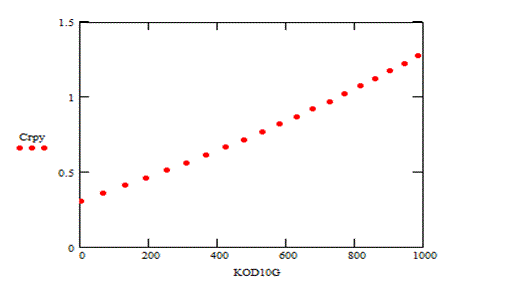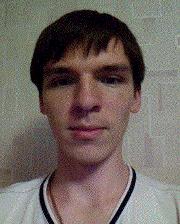Summary on the final work
Research and design of sulfur dioxide monitoring system in the coking plant
Content
- Introduction
- 1. Relevance of the topic
- 2. Objective
- 3. Research Objectives
- 4. Analysis of work
- 5. Evaluation of metrological characteristics of measuring the concentration of sulfur, the method of mathematical modeling.
- Conclusions
- List of sources
Introduction
The device is designed to monitor Volume of sulfur dioxide, reflecting its concentration on the indicator display, helping to define stepeg pollution around the plant.
1. Relevance of the topic
In our region, with a well-developed system of coal and metallurgical industry, more and more ceases relevant equipment monitoring atmospheric pollution, including aparata monitoring of sulfur dioxide concentration. Sulphur dioxide emitted into the atmosphere during the combustion of fuels containing sulfur. The main source of sulfur dioxide are power plants, boilers and metallurgical enterprises. The impact of sulfur dioxide concentrations higher than the maximum permissible can lead to a substantial increase of various respiratory diseases, affect mucosal nasopharyngeal cause inflammation, bronchitis, cough, hoarseness and sore throat. Especially high sensitivity to sulfur dioxide is observed in people with chronic respiratory disorders, asthma. The developed device must determine the concentration of sulfur dioxide and show on the display the display information in real time, which greatly uskarit response personnel to increase the concentration of the test gas.
2. Objective
The aim of this study is the analysis of existing methods and tools for monitoring gas concentrations in the atmosphere in order to select the two most responsible task requirements, methods, and then selecting the prototype and improve its performance.
3. Research Objectives
1. Analyse the existing methods and means for measuring the concentration of sulfur dioxide, selected methods with high accuracy and selectivity for further comparison.
2. Development of a mathematical model of the monitoring device for the first method.
3. The mathematical model of the monitoring device to the second method.
4. To investigate the function of mathematical models to analyze and identify deficiencies of each of metotdov and then selecting the best.
4. Analysis of work
One method of optics-absorption method has been selected. Since it is one of the best in terms of selectivity. Selectivity, high sensitivity , Performance, suitability for continuous measurements, the effect of high output at small increment of the concentration of the sample gas determine its prospects, despite the complexity of the tools . To implement the method in the block diagram provided source narrowband radiation with a spectrum of radiation coincident with the absorption of sulfur dioxide spectrum optical circuit, which is provided by irradiation of the gas-air mixture, a photodetector, which provides optical radiation flux conversion signal convenient for further processing to release information about the concentration of sulfur dioxide . To reduce the noise level of the photodetector and signal processing apparatus provides an optical modulation stream. To realize the modulation in the block diagram of the output signal calculation provides transmitter stress concentration formed in Matchcad application package.
5. Evaluation of metrological characteristics of measuring the concentration of sulfur, mathematical modeling.

Algorithm for obtaining measurement results:

The digital model does not take into account:
— Equipment noise
— Temperature offset signals Shelter
— The disturbance affecting the measurement process (LED Flood measurement stability, the effect of the changes in atmospheric pressure and temperature, the phenomenon of degradation of optoelectronic devices), etc.
.
Detection of measurement errors is made by comparison of measurement results (simulation) with the true value of the measurement of sulfur dioxide concentrations. To set the worst mode of the measurement process, the input model has a normal distribution measured values (SO2 concentrations), the length, the number of simulated measurements, the measurement is made.
Error parameters were processed by the following procedure:
We evaluate the average value of measurement error:

We produce variance estimation

We evaluate SEM

We perform evaluation of the maximum error

The above value of the maximum error

When the measurements take the maximum value of the concentration of

The minimum value

The values of error made

Conclusion
During the design of the device for measuring the volume of sulfur dioxide beaten considered methods of measuring sulfur dioxide and measuring instruments. Beale method is selected on the basis of which were adopted in principle. There were also considered the metrological characteristics of the proposed construction of the measuring device on the basis of the two blocks. One of the blocks is located directly in the area of measurement parameter. In view of this and the measurement results were presented. When evaluating the results obtained were much better than working means of measurement as in the course of a number of disturbances are not taken into account. If in the course of a number of disturbances have been considered, the metrological evaluation proved to be more close to the real gas analytical measurement tools, and would have a value of the error somewhere in the 1-2%.
In writing this essay master's work is not yet complete. Final completion: May 2017. The full text of work and materials on the topic can be obtained from the author or his manager after that date.
List of sources
- Павленко В. А., Газоанализаторы, М. — Л., 1965; Бражников В. В., Дифференциальные детекторы для газовой хроматографии, М., 1974; Кулаков М. В., Технологические измерения и приборы для химических производств, М., 1983. А. М. Дробиз, В. А. Рылов, В. Ю. Рыжнев.
- Кестер У. Проектирование систем цифровой и смешанной обработки сигналов. (Analog-Digital Conversion) Редактор оригинального издания Уолт Кестер. Перевод с английского под редакцией Власенко. A. A. (Москва: Издательство «Техносфера», 2010. — Серия «Мир электроники»).
- Волович Г. И. Схемотехника аналоговых и аналого-цифровых электронных устройств. 2005 год. 528 с.
- Никамин В. А. Аналого-цифровые и цифро-аналоговые преобразователи. Справочник A/D&D/A Converters Reference Book. Санкт-Петербург КОРОНА. принт Москва «Альтекс-А». 2003. 224 c.
- Методы практического конструирования при нормировании сигналов с датчиков. По материалам семинара «Practical design techniques for sensor signal conditioning» Перевод выполнен фирмой Автэкс. Автор перевода: Горшков Б. Л. Редактор перевода: Силантьев В. И. 2011 год. 311 с.
- Изъюрова — Расчёт электронных схем. Примеры и задачи. М.: Высшая школа, 1987. 335 с. Заездный А. М. Гармонический синтез в радиотехнике и элементы связи. Л. «Энергия». 1971. 528с.
- Гусев Ю. М. — Электроника. 2-e, перер. и доп. — М: Высшая школа, 1991. — 622 с.
